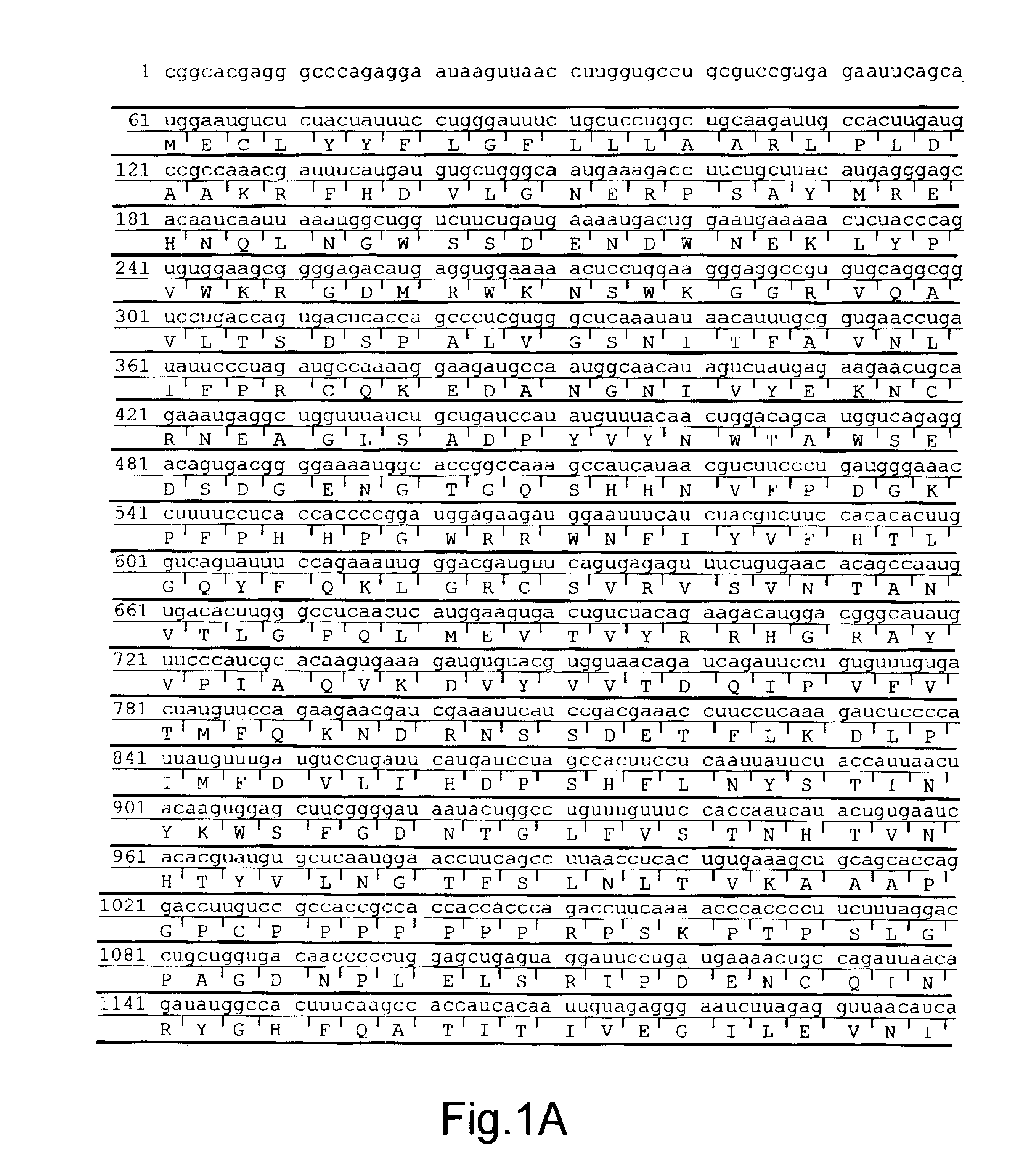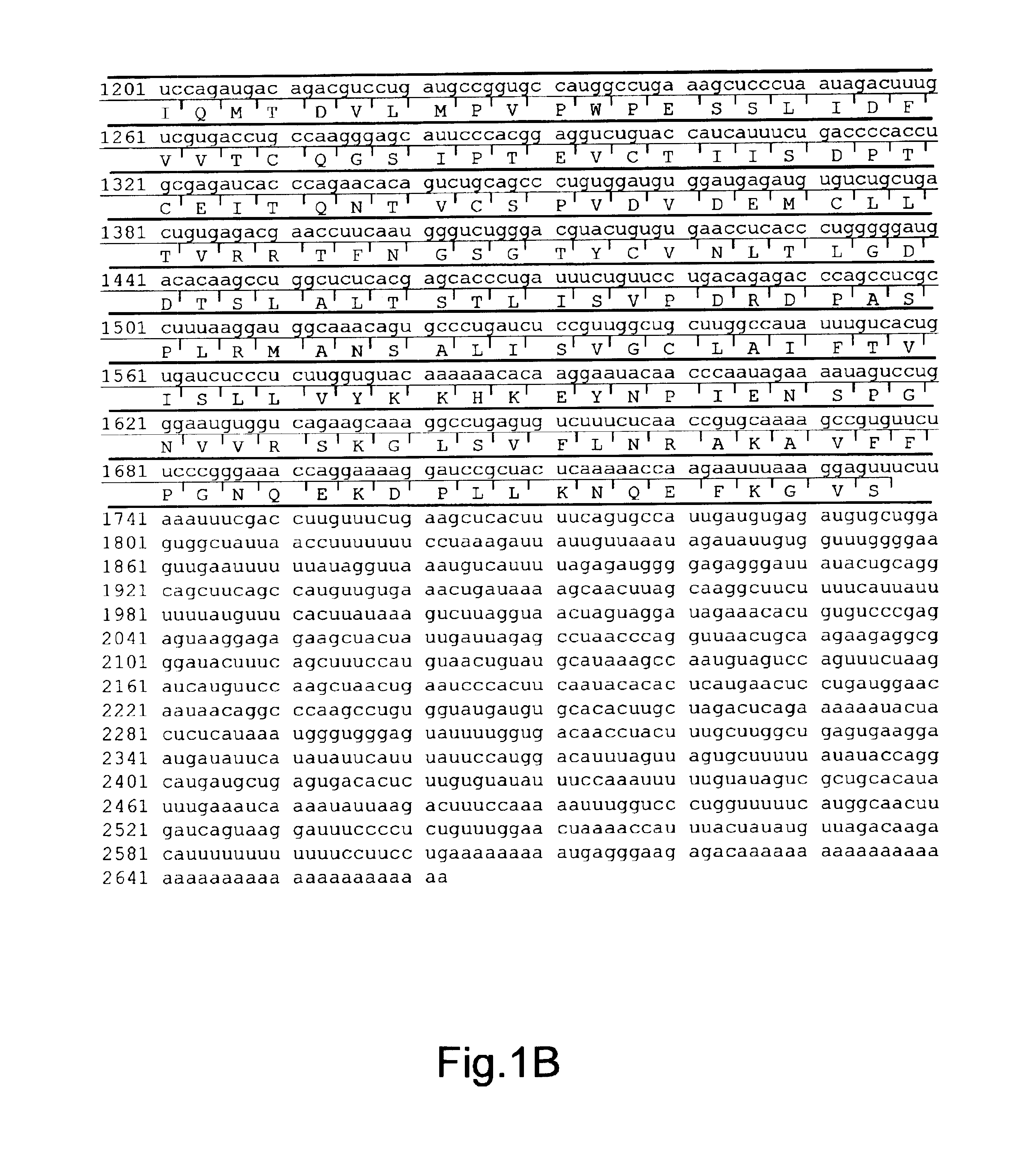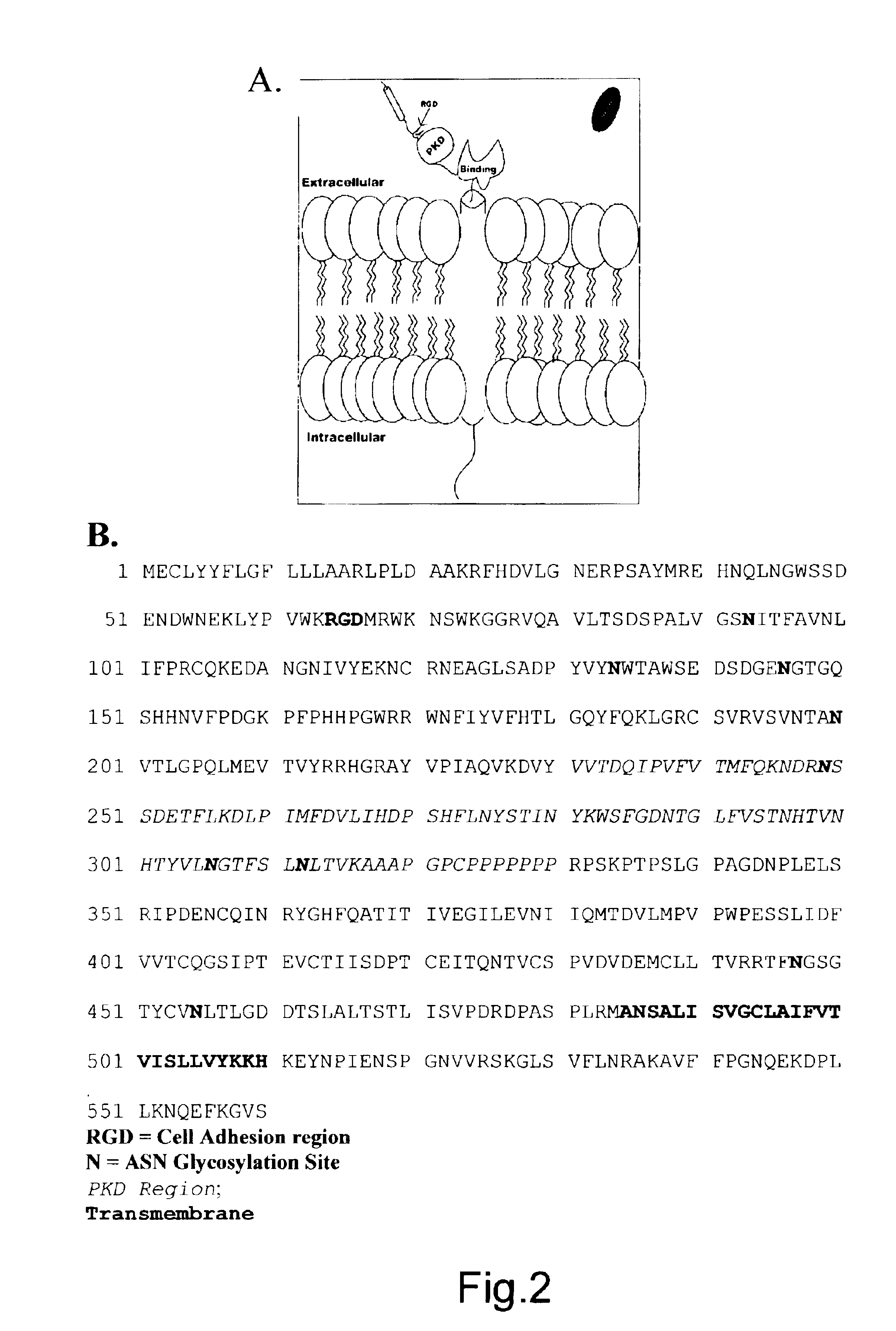Hematopoietic growth factor inducible neurokinin-1 gene
a hematopoietic growth factor and neurokinin technology, applied in the field of immunology, can solve the problems of significant reduction of normal blood cells in circulation, stem cells produced uncontrollably, and the inability to produce stem cells, and achieve the effect of reducing side effects
- Summary
- Abstract
- Description
- Claims
- Application Information
AI Technical Summary
Benefits of technology
Problems solved by technology
Method used
Image
Examples
examples
[0189]The following description sets forth the general procedures involved in practicing the present invention. To the extent that specific materials are mentioned, it is merely for purposes of illustration and is not intended to limit the invention.
[0190]All ligands for the putative HGFIN transmembrane protein are unknown. Since the HGFIN clone was retrieved through screening of cDNA libraries with an NK-1-specific probe, it is believed that the natural ligand for NK-1 is likely responsible for interacting with HGFIN. The 3-D structures of the PKD region from HGFIN (FIG. 3A) was used to determine interactions with SP, which is the preferred ligand for NK-1 (FIG. 3C). Based on the putative spatial arrangement of the HGFIN protein (FIG. 2), SP could contact the extracellular PKD region, after all, the electrostatic differences between SP (17) and PKD could explain the formation of a possible complex (FIG. 3Q). See the examples below for further details.
[0191]Unless other-wise specifi...
example i
[0192]A. Reagents
[0193]Hoffman-La Roche (Nutley, N.J.) provided recombinant human (rh) IL-1α. Stem cell factor (rhSCF), rhIL-6, rhIL-11 and alkaline phosphatase (Alk Phos)-conjugated goat anti-rabbit IgG were purchased from R&D Systems (Minneapolis, Minn.). IL-1β and nerve growth factor (NGF) were purchased from Collaborative Research (Bedford, Mass.) and Amersham Life Science (Cleveland, Ohio) respectively. The following was purchased from Sigma (St Louis, Mo.): Isopropyl-D-Thioglactopyranoside (IPTG), SP, Ficoll Hypaque, lipopolysaccharide (LPS), Fibronectin-Fragment III-C (FN-IIIC), 12-0-tetradecanoylphorbol diester (TPA), dimethylsulfoxide (DMSO) and cytochemical staining kits for 2-naphthyl-acetate esterase and naphthol AS-D chloroacetate esterase. SP was dissolved in sterile distilled water and then immediately solublized with nitrogen gas. The reconstituted SP was used within two days. The immunology department of Genetics Institute (Cambridge, Mass.) provided the human G-CSF...
example 2
[0201]A. Cell Differentiation
[0202]Cell differentiation was performed with a myelomonocytic cell line, HL-60, or BM mononuclear cells (BMNC). HL-60 cells were chemically differentiated with TPA and DMSO for monocytes and granulocytes respectively (18, 19). BMNC were isolated from BM aspirate of healthy donors using Ficoll Hypaque density gradient. The IRB of UMDNJ-Newark Campus approved the use of human BM aspirate for these studies.
[0203]Further, BMNC cells were differentiated with M-CSF or G-CSF (500 U / ml for each) to monocytes and granulocytes respectively. Undifferentiated cells were cultured in parallel with only media. Culture media were replaced at two-day intervals until cytochemical staining determined that >90% of the cells were differentiated. At this time, cell differentiation was terminated and the cells analyzed by northern analyses for Id2 and HGFIN mRNA, and by immunoblot for Id2 protein. For HL-60 cultures, cytochemical staining was performed after three days with 1...
PUM
| Property | Measurement | Unit |
|---|---|---|
| pH | aaaaa | aaaaa |
| Tm | aaaaa | aaaaa |
| temperature | aaaaa | aaaaa |
Abstract
Description
Claims
Application Information
 Login to View More
Login to View More - R&D
- Intellectual Property
- Life Sciences
- Materials
- Tech Scout
- Unparalleled Data Quality
- Higher Quality Content
- 60% Fewer Hallucinations
Browse by: Latest US Patents, China's latest patents, Technical Efficacy Thesaurus, Application Domain, Technology Topic, Popular Technical Reports.
© 2025 PatSnap. All rights reserved.Legal|Privacy policy|Modern Slavery Act Transparency Statement|Sitemap|About US| Contact US: help@patsnap.com



